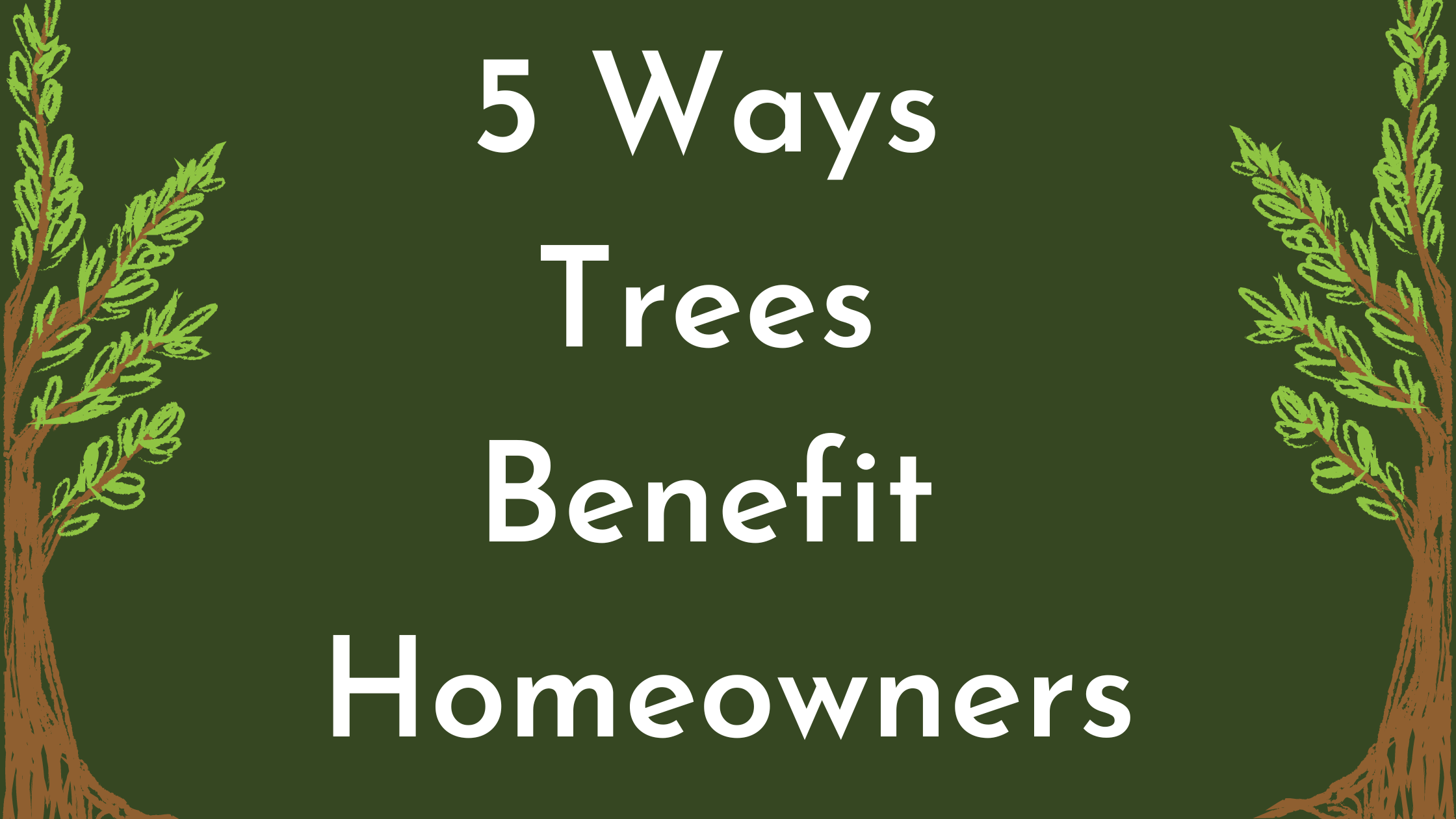

Trees are an integral part of the environment, providing habitat, cover, cooling effect, and oxygen. However, did you also know that trees benefit homeowners who plant them in their yards? The following 5 points are reasons why homeowners should consider planting another tree, or two, in their yards.
Landscaping is a large part of curb appeal, and trees can be a large part of landscaping. They’ve been found to have an impact on property value, with mature trees adding to a property’s value (the percentage can vary from 2 to 15% depending on other factors). The study found that the most significant increase will likely be seen in high-income areas compared to less affluent regions. These mature trees give a real character to the property and can help it to stand out amongst the competition on the market.
If choosing the proper trees, trees can offer a green screen or natural privacy barrier from neighbors – allowing for visual blocking and a sound barrier.
In Lake County, and beyond, runoff and soil erosion can be a real issue with all the water bodies. Although many think these issues are relevant only to developments or agricultural land, this is a misconception.
Storm water management is an essential aspect of urbanization and residential neighborhoods. When rain falls on impervious surfaces, it does not allow the water to be taken into the ground; it then runs into the areas’ streams, creeks, wetlands, lakes, and rivers. This runoff can carry pollutants like nitrogen, phosphorous, metals, and bacteria, to name a few. Although cities typically have storm water management in place to deal with most of these issues, it is vital to be a responsible citizen and attempt to do one’s part in reducing this impact. Trees help to decrease the amount of storm water runoff and pollutants that reach the local waters in a few ways:
Did you know that trees can help you save money on energy? In fact, properly positioned trees can “reduce a household’s energy consumption for heating and cooling by up to 25%.” Planting trees can quickly become an energy saver with respect to three areas: shading, windbreaks, and dead space. Deciduous trees, or ones that lose their leaves, are ideal for energy conservation as they provide shade during the summer months and minimal cover during the winter; meanwhile, evergreen trees are best for providing a windbreak. But, of course, there are more planting rules than just the type of tree when it comes to getting the most bang for your buck.
When choosing trees for energy savings, things to keep in mind are insect/disease resistance (especially if planting multiple trees of the same species in one small area), wind tolerance, height and width maturity, and timeline of growing (faster-growing trees are typically weaker than slower growing ones).
A healthy lawn needs good soil to thrive, and organic matter and water are a significant part of good soil. Trees provide these two aspects by bringing in rainwater, roots breaking up the ground, and leaf litter providing organic matter. So, by planting trees, soil health will be improved, thereby, improving the overall look of your lawn.
Picking out the right tree depends on what you’re looking for, as different trees can provide different benefits, so if you’re looking for a privacy barrier, then you’ll want . . .
However, if shade and cover is what you’re after, you would do better to choose something like. . .
Some individuals just want a colorful backyard, with flowers or fall leaves, which makes the following ideal choices. . .
Meanwhile, for those who want to attract wildlife to their yard, they’ll want to go for a . . .
No matter the reason for planting trees, it’s an important aspect of homeownership to consider. With early spring here, it’s a great time to consider adding a new tree, or two, to the yard.